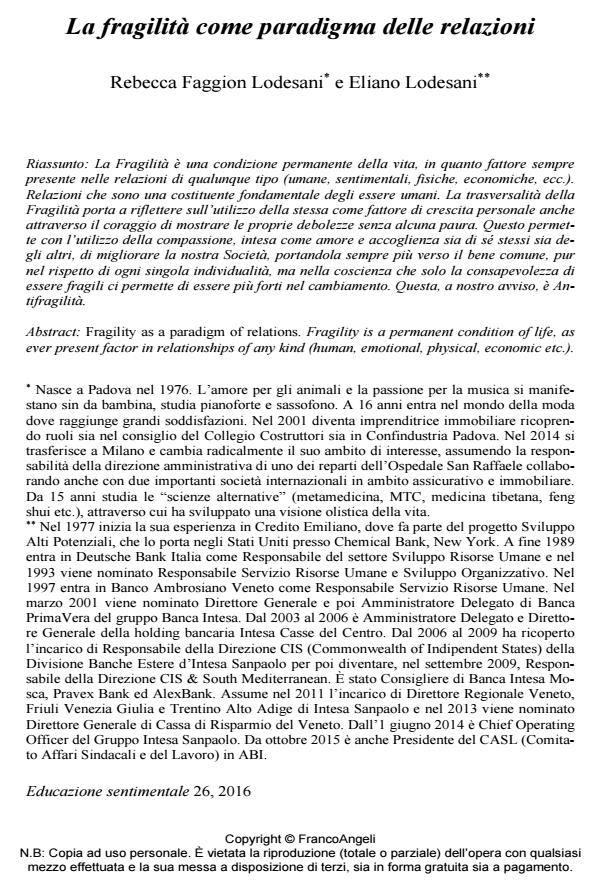La fragilità come paradigma delle relazioni
Journal title EDUCAZIONE SENTIMENTALE
Author/s Rebecca Faggioni Lodesani, Eliano Lodesani
Publishing Year 2016 Issue 2016/26
Language Italian Pages 7 P. 146-152 File size 170 KB
DOI 10.3280/EDS2016-026009
DOI is like a bar code for intellectual property: to have more infomation
click here
Below, you can see the article first page
If you want to buy this article in PDF format, you can do it, following the instructions to buy download credits

FrancoAngeli is member of Publishers International Linking Association, Inc (PILA), a not-for-profit association which run the CrossRef service enabling links to and from online scholarly content.
Fragility as a paradigm of relations. Fragility is a permanent condition of life, as ever present factor in relationships of any kind (human, emotional, physical, economic etc.). Relationships that are a fundamental constituent of human beings. The transversal nature of Fragility leads to reflect on the use of it as a personal growth factor through the courage to show our weaknesses without fear. This allows to use the compassion, as love and ac-ceptance both of themselves and of others, to improve our society, bringing it ever closer toward the common good, and in the respect of the individuality of each person, but in the consciousness that only the awareness of being fragile allows us to be stronger in the change. This, in our view, is Antifragility.
Keywords: Fragility, antifragility, compassion, behavior, faith, confidence, courage, soul, weakness, feeling.
Rebecca Faggioni Lodesani, Eliano Lodesani, La fragilità come paradigma delle relazioni in "EDUCAZIONE SENTIMENTALE" 26/2016, pp 146-152, DOI: 10.3280/EDS2016-026009